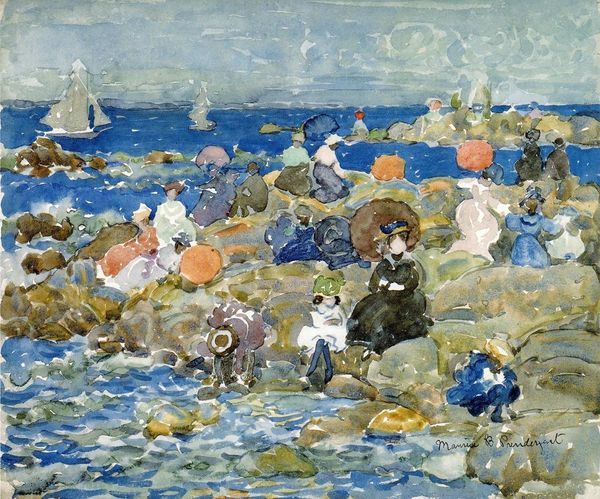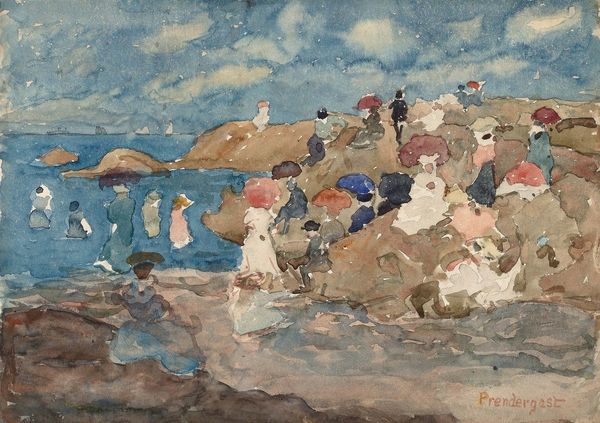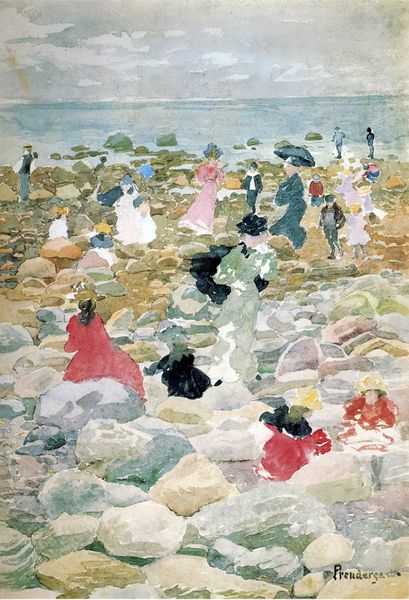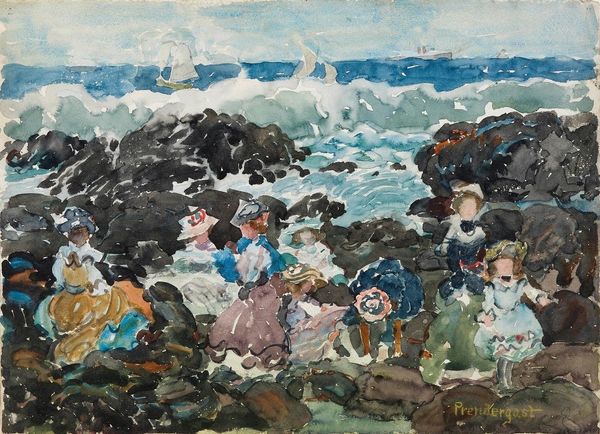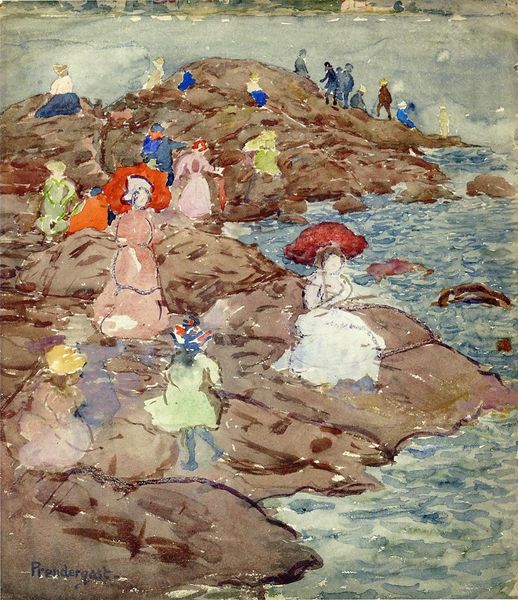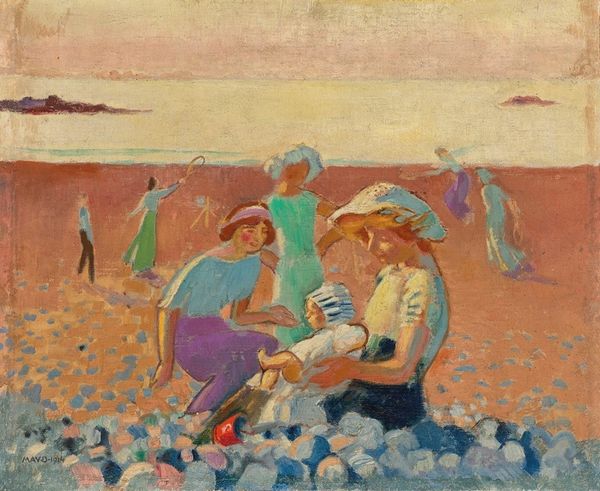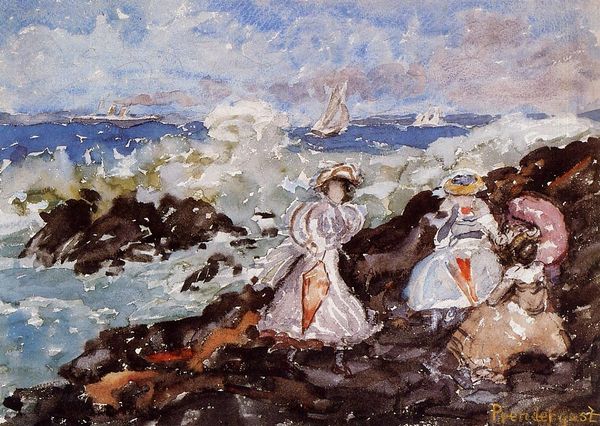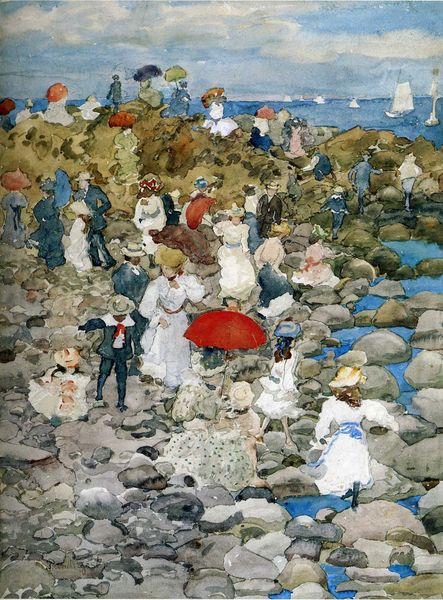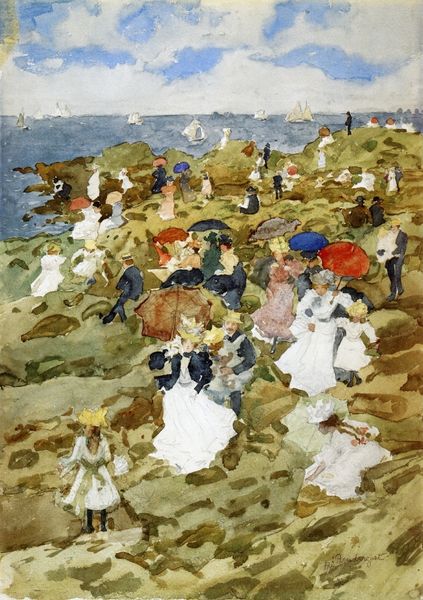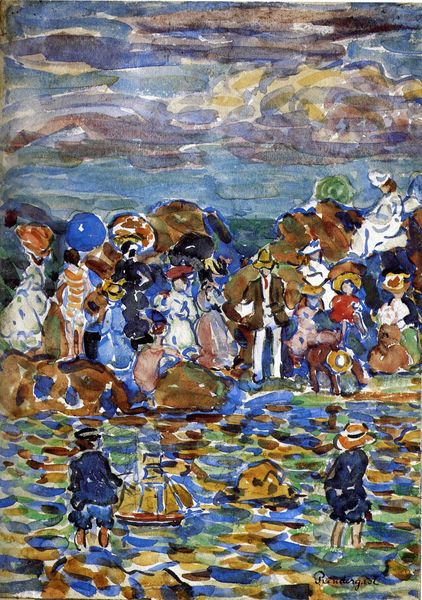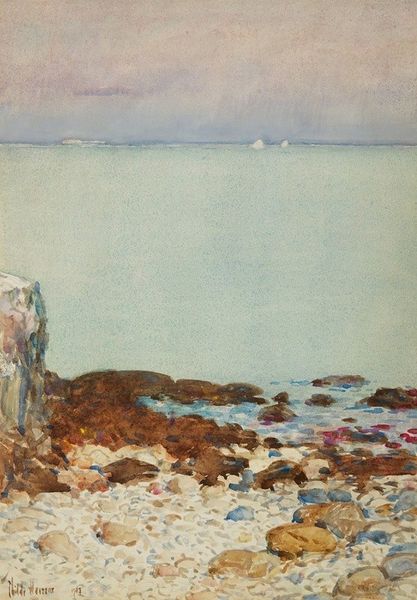
Dimensions: 35.56 x 25.4 cm
Copyright: Public domain
Curator: This is Maurice Prendergast’s "Low Tide," created in 1897. Prendergast was known for his lively depictions of leisure, often working "en plein air" in watercolor and oil. Editor: The composition feels quite light and airy, despite the figures being clustered among heavy, earth-toned rocks. The parasols punctuate the scene, like delicate exclamation points. Curator: Precisely. Prendergast captures a moment of societal change where leisure activities among middle-class people start to take center stage in art. It marks a democratization of subject matter, away from portraying historical or mythological scenes. We begin seeing ordinary people as valid subject. Editor: What interests me most is Prendergast's use of the parasols as social signifiers. They represent a cultivated world, emblems of propriety and status that also shield from the sun. The parasol offers visual drama but is a deeper indicator of a particular class identity at leisure. Curator: Yes, you also find echoes here of impressionism, the style and moment allowing such representation and documentation to thrive; it becomes about seeing and conveying one’s perception of life as it's happening. It also, in turn, influenced new patterns for how life should be lived—the relationship became mutually constituted. Editor: This interplay between visual and social messaging becomes particularly pronounced in the depiction of fashion. The lady in the ornate lavender dress, the splashes of color atop her head... Prendergast isn't just showing clothing; he’s coding an era and attitude toward itself, how a self might fashion oneself. Curator: We see, as well, Prendergast grappling with representing fleeting impressions, with his looser brushstrokes becoming a signature, something that he also borrows from fellow impressionists and contributes to. Editor: I’m intrigued that this slice of life offers a portrait of changing cultural symbols in action, a moment registered on canvas. Curator: Yes, a unique intersection of observation, representation, and socio-historical circumstances—that’s one key quality this piece holds. Editor: The painting manages to feel both intimate and illustrative of larger social narratives simultaneously, like looking through a keyhole into a gilded age.
Comments
No comments
Be the first to comment and join the conversation on the ultimate creative platform.
